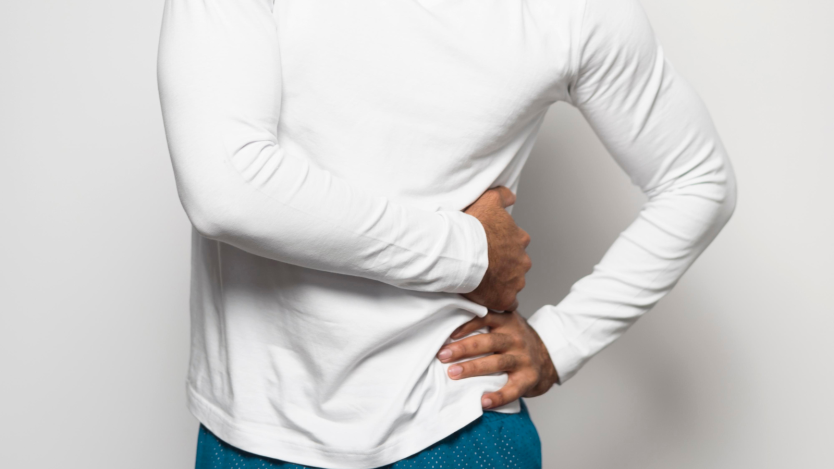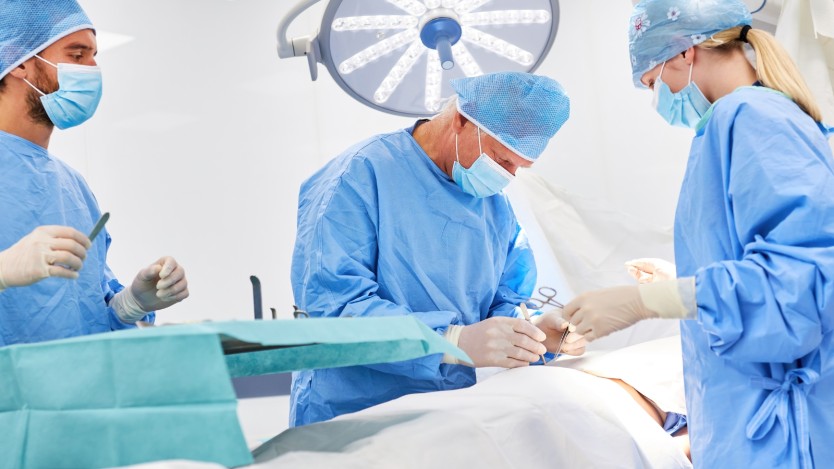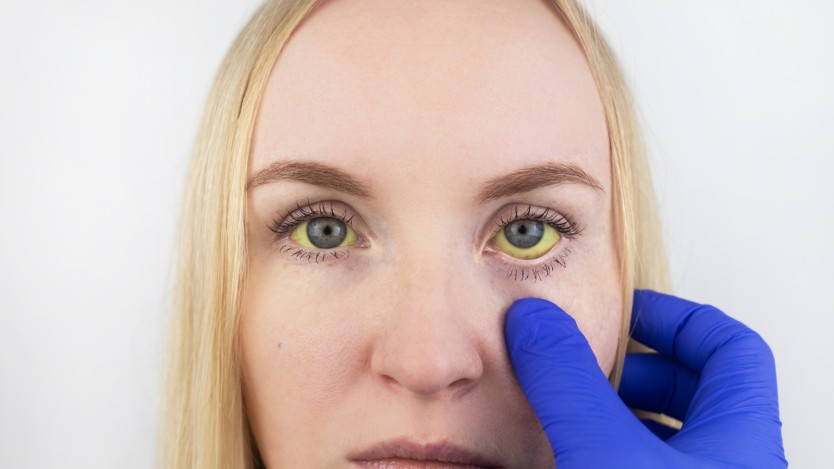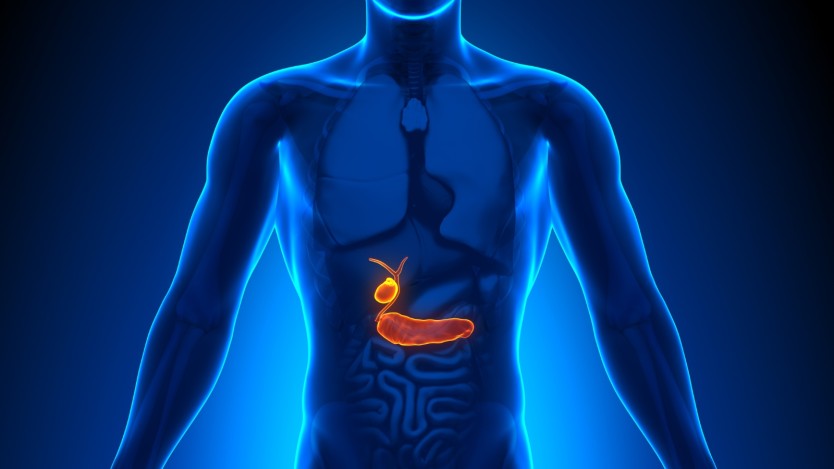What are the symptoms of gallbladder problems?

- What is the gallbladder?
- Problems in the gallbladder
- Symptoms of gallbladder problems
- Treatment of gallbladder problems
- Surgical assessment consultation with the General and Digestive Surgeon
- The gallbladder is a small organ located below the liver. It is responsible for storing bile, which is used by the body to facilitate digestion and enable the absorption of fats. In addition, excess cholesterol and waste products of haemoglobin metabolism, such as bilirubin, are excreted through bile.
- When the flow of bile through the bile ducts is obstructed, various gallbladder problems can occur, such as gallstones, acute or chronic cholecystitis or bile duct obstructions.
- The treatment for all these gallbladder problems is mainly surgery, whereby the gallbladder is removed. This operation is called cholecystectomy.
What is the gallbladder?
The gallbladder is a small, pear-shaped organ located just below the liver. The gallbladder's main function is to store bile, a yellowish or greenish liquid, which is produced by the liver.

Do you need gallbladder removal surgery?
Request a free and immediate appointment with our specialists in General Surgery
Problems in the gallbladder
As we have been telling you, the function of the gallbladder is to release a substance called bile (produced by the liver) during digestion.
The bile ducts connect the liver and gallbladder to the intestine. Sometimes the bile ducts do not work properly because they are blocked by gallstones, which are created when substances in the bile harden.

Let's take a look at some of the most common problems that affect the proper functioning of the gallbladder:
Cholelithiasis: stones in the gallbladder or gallstones
This is one of the most common gallbladder problems. It is the formation of small stones in the gallbladder from an abnormal build-up of cholesterol or bilirubin. This build-up can cause:
- Inflammation of the gallbladder.
- Obstruction of the outflow ducts or bile ducts, which can even lead to the walls of the gallbladder breaking down.
Cholecystitis or inflammation due to infection
This is an inflammation of the gallbladder wall and subsequent infection of the gallbladder, due to an obstruction caused by gallstones in the cystic duct (a duct which, together with the common hepatic duct, forms the common bile duct, through which bile flows).

The obstruction caused by gallstones causes gallbladder juices to be trapped inside the gallbladder, causing irritation of the gallbladder walls. This irritation causes:
- Sudden, severe pain.
- Inflammation of the gallbladder walls and bacterial growth.
Cholecystitis is due to obstruction of the cystic duct by gallstones.
Choledocholithiasis: obstruction of the bile duct
Like cholecystitis, it is caused by an obstruction caused by gallstones, but this time in the common bile duct, which is where bile travels from the gallbladder to the small intestine. This duct is the main bile duct.
The presence of these stones often causes problems such as:
- Biliary colic.
- Biliary obstruction.
- Biliary pancreatitis.
- Cholangitis (infection and inflammation of the bile ducts).
Polyps in the gallbladder
A polyp is a growth that protrudes from the surface of the inner wall of the gallbladder. Some of the polyps may form due to a build-up of cholesterol on the walls of the gallbladder.
Specialists usually recommend removal of the gallbladder when polyps are larger than one centimetre in size, as they are more likely to be malignant.
Symptoms of gallbladder problems
Depending on the problem that occurs in the gallbladder, we may find some symptoms or others, although in some cases the symptoms do not vary from one problem to another.
Symptoms of cholelithiasis: gallstones or gallbladder stones
It should be noted that cholelithiasis or gallstones do not always present symptoms in the patient. Sometimes, doctors discover it during the course of other tests, such as X-rays, ultrasound scans, etc. About 20% of patients with cholelithiasis have no symptoms.
Biliary colic, whether in acute or chronic cholecystitis, begins as pain in the middle to upper right side of the abdomen.
In other cases, some of the symptoms that can be produced by this gallbladder problem, we can find:
- Biliary dyspepsia: intolerance to fatty foods, causing flatulence, nausea and vomiting.
- Pain in the upper right part of the abdomen: this occurs when one of the gallstones blocks one of the bile ducts. This pain usually occurs after eating a large or fatty meal. It is a colicky pain, which waxes and wanes in intensity.
- Jaundice (yellowing of the skin and eyes): this symptom does not occur very often.
- Fever and chills.
Symptoms of cholecystitis or inflammation of the gallbladder due to infection
Some of the symptoms are similar to those of cholelithiasis, although not all are the same.
- Pain in the right upper abdomen: remains constant, unlike gallstone pain, which waxes and wanes in intensity.
- Nausea and vomiting.
- Fever: fever occurs in the first few hours, which usually decreases gradually when the patient takes antipyretic medication. As this is a gallbladder infection, this symptom is quite common.

Do you need gallbladder removal surgery?
Request a free and immediate appointment with our specialists in General Surgery
Symptoms of choledocholithiasis: bile duct obstruction
The main symptoms of gallstones in the common bile duct (which, as mentioned above, is where bile travels from the gallbladder to the small intestine) are:
- Abdominal pain in the upper abdomen that may move to the right shoulder.
- Vomiting, nausea and indigestion.
- Fever and chills
- Jaundice (yellowing of the skin and eyes).
Choledocholithiasis may be asymptomatic, but often causes upper abdominal pain and jaundice.

Polyps in the gallbladder
Polyps in the gallbladder do not usually cause symptoms to the patient. Patients with polyps usually also have gallstones, so it is difficult to distinguish where the pain is coming from if the patient has pain.
As we can see, all the gallbladder problems that we have discussed present more or less similar or the same symptoms in some cases, so the treatment will also be the same for all of them.
Treatment of gallbladder problems
When gallbladder problems present symptoms, it is best for the patient to undergo surgery to remove the gallbladder, which will completely eliminate the symptoms and improve the quality of life.
The surgery to remove the gallbladder is called cholecystectomy and can be performed in several ways:
Cholecystectomy by open surgery
Open cholecystectomy is the conventional method, although it is not the most commonly used, as it is more common for the specialist to resort to laparoscopic cholecystectomy.
Open cholecystectomy is recommended in cases of a very inflamed, infected gallbladder or large gallstones.
In this operation, the surgeon, after giving the patient a general anaesthetic, makes an incision in the abdomen of about 15 cm and proceeds to remove the gallbladder. The open cholecystectomy operation lasts between 30 and 90 minutes, depending on the complexity of each case.

After the surgery and depending on the complexity of the open cholecystectomy surgery, the patient will be discharged after 1 to 4 days and will reach full recovery after 4 - 6 weeks.
Laparoscopic cholecystectomy
Laparoscopic cholecystectomy is a minimally invasive surgery in which no large incision is made in the patient. The laparoscopic technique can be performed by various approaches, three of which are listed below:
- Conventional laparoscopic cholecystectomy: Three incisions are made in the abdominal area through which the laparoscope and other surgical instruments are inserted, allowing the surgeon to remove the gallbladder without the need for open surgery.
- Transumbilical laparoscopic cholecystectomy: a single incision is made in the patient's navel. A device called a "single port" is used to insert the surgical tools needed to remove the gallbladder. The gallbladder is removed through the incision made in the navel. The scarring will be minimal one month after the operation.
- Transvaginal laparoscopic cholecystectomy: unlike the transumbilical approach, in the transvaginal approach three incisions are made (one at the back of the vagina, another at the bottom of the navel and another in the abdomen) through which a laparoscope (a device with a light source and a camera at one end that allows the surgeon to see inside the patient's body on a monitor located in the operating theatre) is introduced through a small incision in the abdomen. The other incisions are used to introduce the rest of the surgical tools that will allow the specialist to operate correctly.
The hospital stay after laparoscopic cholecystectomy is only 1 day.
In conclusion, it must be said that the laparoscopic approach has advantages over open surgery, as recovery times are shorter and healing is complete in approximately one month after the surgery.
Open or laparoscopic cholecystectomy provides a definitive solution to the symptoms caused by gallbladder pathology. Surgery should be indicated as soon as possible to avoid the appearance of unwanted complications.

Do you need gallbladder removal surgery?
Request a free and immediate appointment with our specialists in General Surgery
Surgical assessment consultation with the General and Digestive Surgeon
If you are suffering from the discomfort and pain caused by the blockage of the gallbladder or its ducts due to the development of gallstones and you are looking for a specialist in your city, you can contact our patient service department by calling at +34 91 141 33 56 or by filling the contact form.
You can also click on the image below to request a free surgical assessment consultation to put an end to these problems once and for all, restore your health and improve your quality of life:

Do you need gallbladder removal surgery?
Request a free and immediate appointment with our specialists in General Surgery
Medical disclaimer: All the published content in Operarme is intended to disseminate reliable medical information to the general public, and is reviewed by healthcare professionals. In any case should this information be used to perform a diagnosis, indicate a treatment, or replace the medical assessment of a professional in a face to face consultation. Find more information in the links below:
